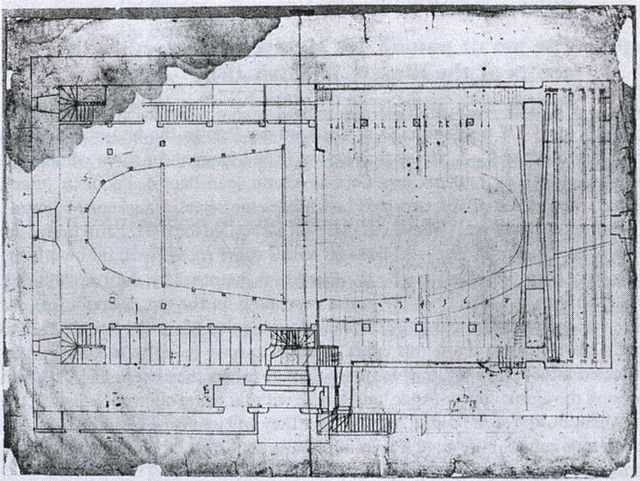The Salle de la Bouteille or Salle du Jeu de Paume de la Bouteille, later known as the Hôtel [de] Guénégaud or Guénégaud Theatre, was a 1671 theatre located in Paris, France, between the rue de Seine and the rue des Fossés de Nesle. It was across from the rue Guénégaud, which ran behind the garden of a townhouse formerly known as the Hôtel de Guénégaud on the quai de Nevers. The theatre was the first home of the Paris Opera and in 1680 became the first theatre of the Comédie-Française. It closed in 1689 and was later partially demolished and remodeled for other purposes.
Plaque at the intersection of the rue Jacques-Callot and the rue Mazarine: "Here was erected the Salle du Jeu de Paume de la Bouteille, where the first opera of Paris opened on 16 [sic] March 1671."
Presumed plan of the theatre near the Passage du Pont-Neuf (1886)
The Paris Opera is the primary opera and ballet company of France. It was founded in 1669 by Louis XIV as the Académie d'Opéra, and shortly thereafter was placed under the leadership of Jean-Baptiste Lully and officially renamed the Académie Royale de Musique, but continued to be known more simply as the Opéra. Classical ballet as it is known today arose within the Paris Opera as the Paris Opera Ballet and has remained an integral and important part of the company. Currently called the Opéra national de Paris, it mainly produces operas at its modern 2,723-seat theatre Opéra Bastille which opened in 1989, and ballets and some classical operas at the older 1,979-seat Palais Garnier which opened in 1875. Small scale and contemporary works are also staged in the 500-seat Amphitheatre under the Opéra Bastille.
Logo of the Paris Opera
Palais Garnier
View of the Salle du Bel-Air
Vigarani's plan of the Salle du Palais-Royal






